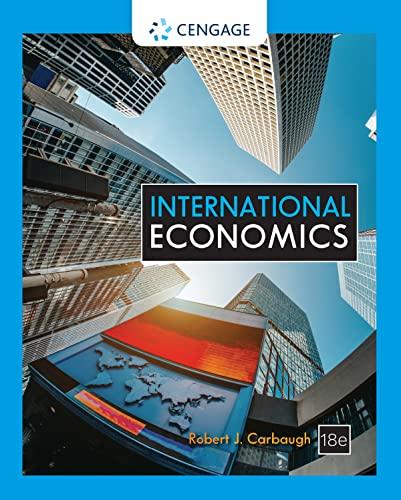Economists at the Federal Reserve Bank of Dallas have examined the effects of changing competitiveness and deindustrialization
Question:
Economists at the Federal Reserve Bank of Dallas have examined the effects of changing competitiveness and deindustrialization on the labor market. They conclude that the decline of industrial employment in advanced economies is part of a long-run structural transition. A growing service sector, with an increasing share of jobs, has become key to competitiveness and long-run productivity growth. This essay summarizes their argument. Employment in America's industrial sector-which includes manufacturing, mining, and construction- increased by approximately 240,000 jobs annually from 1900 to 1980. By 1980, industrial employment peaked, and it has declined ever since. This decrease has fostered debate about American companies outsourcing their operations abroad and protectionist barriers applied to trade.
The U.S. economy has undergone a structural transformation throughout its history. From the 1800s to the early 2000s, America has realized a decreasing share of agricultural employment, a rise and subsequent decrease of industrial employment, and most recently, an increase in employment in the service sector, such as banking, finance, and insurance. In fact, all advanced economies have experienced a similar evolution. The decline in industrial employment reflects productivity gains arising from discovery and innovation and an expanding service sector. In particular, globalization and international trade have permitted the United States to produce and export high value-added manufacturing and services while importing low tech goods from emerging countries. However, a declining manufacturing sector harms some workers who lack the skills to find work with firms producing sophisticated manufactured goods and services. As a result, there has been resistance in the United States to globalization and the outsourcing of manufacturing. American manufacturing has difficulty competing with the low labor costs of unskilled workers in emerging economies. Rather, the comparative advantage of the United States is in producing high-technology, high - value added goods and services.
Policies that are intended to protect the American manufacturing sector, such as export subsidies, import tariffs, and limits on offshoring, ultimately impede the process of structural transformation and can hinder long-run economic growth. Instead, policymakers should recognize the significance of an expanding service sector and consider focusing resources on assisting displaced manufacturing workers and providing incentives for them to acquire skills to engage in higher value-added activities.
What do you think? Regarding deindustrialization and employment, what do you think about the views of economists at the Federal Reserve Bank of Dallas?
Step by Step Answer:






